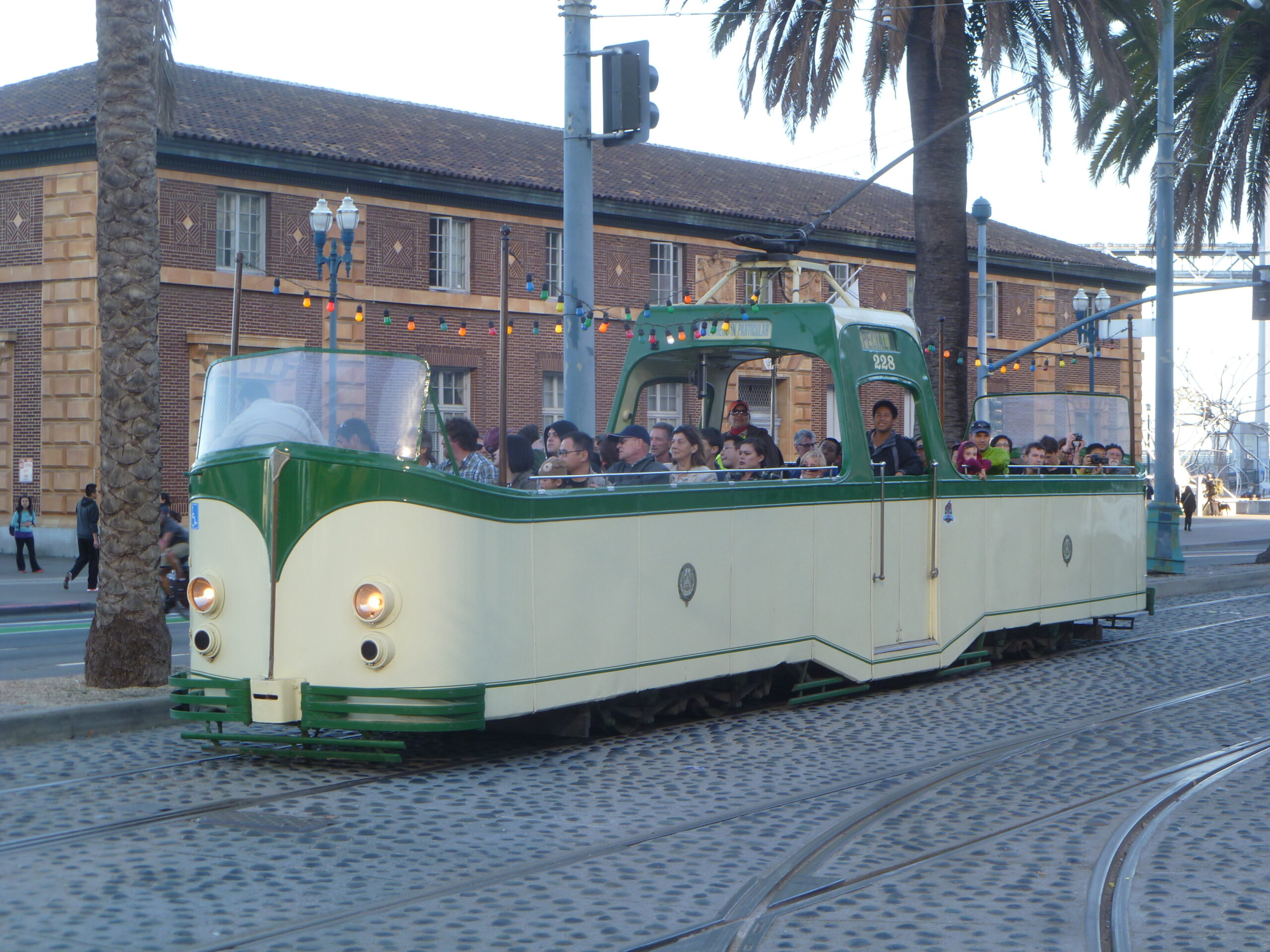Muni owns not one but two boat trams—and they’re Mayor London Breed’s preferred way for getting around San Francisco, according to Rick Laubscher, president of the nonprofit Market Street Railway.
“Those are the mayor’s favorite,” Laubscher said, gesturing to them on the Cameron Beach yard where they live when they’re not attracting scores of fans rolling through the street.
You not only see them but also hear them, since both are equipped with a nautical air whistle that toots merrily. With their widow’s peak-shaped paint schemes and front headlights that look like eyes, the two trams call to mind friendly owls.
It’s easy to understand why they are so irresistible.
“Of all the streetcars in Muni’s historic fleet, none turn heads faster,” according to the Market Street Railway website.
The cars in question are #228 and #233, and they hail from Blackpool, England, where they began their lives in 1934 and entertained riders for decades in the English seaside resort during the summer months. Three of this style of boat tram still operate in Blackpool—at times adorned with hundreds of festive, sparkling lights.
The San Franciscan boat trams are strung with a simple strand of lights in honor of the wildly popular illuminated tram rides in England. But there’s another element on our boat trams that’s all our own: The Jolly Roger flag, which flies jauntily overhead to symbolize the freewheeling, good times spirit of San Francisco.
The two open-top streetcars, acquired by Muni three decades apart, celebrate their 90th birthday next year. They are both in the process of getting some early gifts—car #223 is having its wheel sets rebuilt and will be back in action by summer, and #228 is about to be repainted. When it’s finished, it will sport a new red-and-cream color scheme to match one of its siblings in Blackpool, whereas #223 will keep its green-and-cream livery (that’s a fancy word for a historic paint scheme).
The two streetcars have won popularity contests and delighted riders of all ages on San Francisco’s streets.
“It’s a few steps deeper than just moving people,” Laubscher said.
